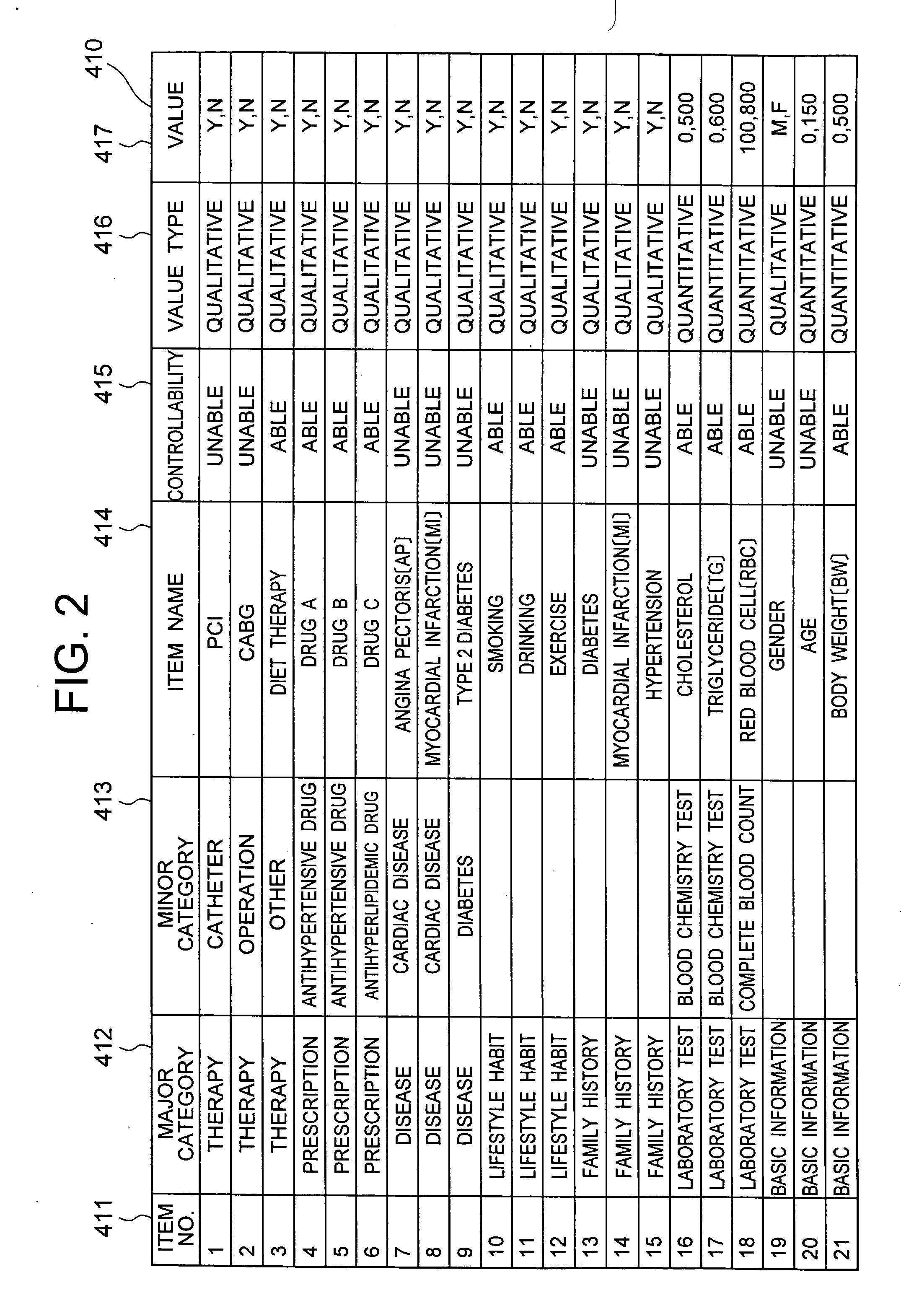Data analysis system and data analysis method
a data analysis and data technology, applied in the field of data analysis systems and data analysis methods, can solve the problems of difficult to obtain optimal information in a practical time, inability to compare and study a plurality of rules at a time, and fear of overlooking information that has not been obtained, etc., to achieve simple operation, rapid analysis results, and simulation of the influence of other items
- Summary
- Abstract
- Description
- Claims
- Application Information
AI Technical Summary
Benefits of technology
Problems solved by technology
Method used
Image
Examples
Embodiment Construction
[0038] A configuration example of a clinical data analysis system according to the present invention is shown in FIG. 1. A clinical information database 120 stores and manages information, such as the gender, age, disease name, therapy method, prescription, condition of disease, and results of laboratory tests, generated during daily medical examination. This database may share a database, such as an electronic medical record database or an order entry system database, included in a hospital information system. A data import unit which is not illustrated may be provided to import data from the system. A data input unit which is not illustrated may be provided to allow a doctor or nurse to directly input data.
[0039] A data analysis unit 110 analyzes association between clinical information by utilizing data stored in a clinical information database 120, and outputs a result of the analysis in an association rule form. For the analysis, for example, a technique called association rul...
PUM
 Login to View More
Login to View More Abstract
Description
Claims
Application Information
 Login to View More
Login to View More - R&D
- Intellectual Property
- Life Sciences
- Materials
- Tech Scout
- Unparalleled Data Quality
- Higher Quality Content
- 60% Fewer Hallucinations
Browse by: Latest US Patents, China's latest patents, Technical Efficacy Thesaurus, Application Domain, Technology Topic, Popular Technical Reports.
© 2025 PatSnap. All rights reserved.Legal|Privacy policy|Modern Slavery Act Transparency Statement|Sitemap|About US| Contact US: help@patsnap.com



